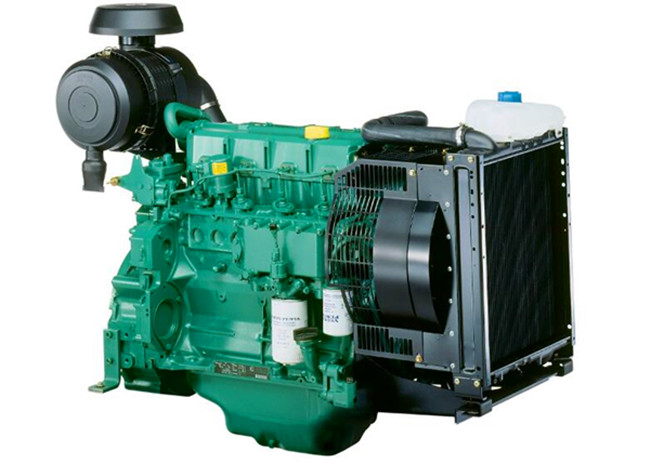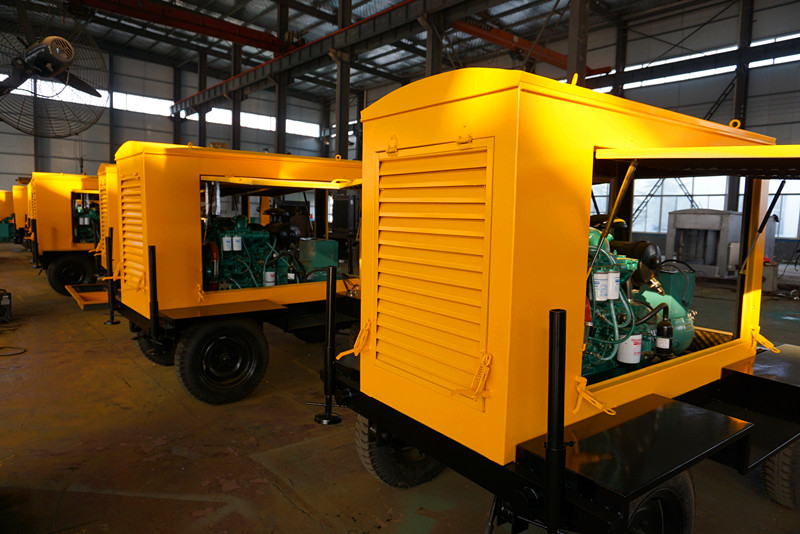In the previous articles, we have talked about Volvo engine starting and operation as well as shutdown related information. In this post, you will learn Volvo engine TAD530GE fault handling. Knowing about troubleshooting will help you solve the machine problems quickly.
Fault Tracing
A number of symptoms and possible causes of engine malfunctions are described in the table below. Always contact your Volvo Penta dealer if any problems occur which you cannot solve by yourself.
Symptoms and possible causes
• The diagnostics button indicator blinks
• Engine cannot be stopped
• Starter motor does not rotate
• Starter motor rotates slowly
• Starter motor rotates normally but engine does not start
• Engine starts but stops again
• Engine does not reach correct operating speed at full throttle
• Engine runs unevenly
• High fuel consumption
• Black exhaust smoke
• Blue or white exhaust smoke
• Lubricating oil pressure too low
• Coolant temperature too high
• Coolant temperature too low
• No charge, or poor charge
1 Discharged batteries
2 Poor contact/open circuit in cables
3 Main switch in off position
4 Faulty ignition switch
5 Faulty main relay
6 Faulty starter motor relay
7 Faulty starter motor/solenoid
8 Lack of fuel:
– fuel taps closed
– fuel tank empty/wrong tank connected
9 Blocked fuel filter/primary filter (because of contamination, or paraffin fraction separation in fuel at low temperature)
10 Air in the fuel system
11 Water or contaminants in fuel
12 Faulty injection pumps
13 Insufficient air supply to engine:
– blocked air filter
– air leakage between turbocharger and engine inlet manifold
– fouled compressor section in turbocharger
– faulty turbocharger
– poor engine bay ventilation
14 Coolant temperature too high
15 Coolant temperature too low
16 Oil level too low
17 Coolant level too low
18 Air in the coolant system
19 Faulty circulation pump
20 Defective thermostat
21 Clogged charge air cooler
22 Oil level too high
23 Alternator drive belt slipping
24 Water entry into engine
25 High back pressure in exhaust system
26 Break in “Pot+” cable to pedal
27 Incorrectly set engine speed regulator/actuator

Diagnostic Function
The diagnostic function monitors and checks that the EDC 4 system functions normally and has the following tasks:
• Discover and localize malfunctions.
• Notify that malfunctions have been discovered.
• Give advice in fault finding.
• Protect the engine and ensure continued operation when serious malfunctions are discovered.
Fault message
If the diagnostic function detects a fault in the EDC 4 system notification is made either through the CAN bus or the diagnostics lamp, which will light up or begin
flashing. Simultaneously, the fault will be stored in the control module memory.
Once the fault is remedied and the ignition has been switched off and back on, the fault code goes out. Both rectified (passive) and unrectified (active) faults are stored in the control unit and can be read off by authorized Volvo Penta workshops.
Fault tracing guide
If the diagnostic button is depressed (for 1-3 seconds) and then released, a fault code is flashed out from the diagnostic lamp. The fault code is found in the fault
code list, with information about the reason, reaction and measures to be taken. Refer to the Fault Code Register page 24 chapter.
Effect on the engine
The diagnostic function affects the engine in the following ways:
1 The diagnostic function has discovered a minor malfunction which does not damage the engine.
Reaction: The engine is not affected. The diagnostic lamp lights up.
2 The diagnostic function has discovered a serious malfunction which makes it impossible to control the engine.
Reaction: The diagnostic lamp flashes. The engine is shut down.
Operation
During starting
When the ignition is turned on, the diagnostics lamp and oil pressure and coolant warning lamp light for two seconds. This is to check the lamp function. If the diagnostic lamp flashes after the two seconds, this indicates a serious fault and the engine can not be started. One or more fault codes can then be flashed out. If the
diagnostic lamp is lit, there are one or more less serious faults. One or more fault codes can then be flashed out.
During operation
If the diagnostic lamp starts to flash during operation:
1 Reduce engine speed to idle.
2 Press the diagnostic button (for 1-3 seconds).
3 Release the diagnostic button and make a note of the diagnostic trouble code (DTC) that is flashed out. See ”Reading fault codes”.
4 Look up the fault code in the fault code list and take the necessary measures. Refer to the "Fault codes" chapter. If the diagnostic lamp flashes the engine will shut down.
IMPORTANT!
In VE engines, there is a function in the system which makes it possible to start the engine again and run it for about 25 seconds. This is so that the vehicle can be moved from e.g. a railway crossings.
Reading fault codes
Fault codes can either be read via:
1 The VODIA tool (including the Penta EDC4 software). Please refer to the “VODIA ser’s Guide” for advice on use.
2 Diagnostic lamp
3 CAN
Diagnostic lamp
If the diagnostic lamp is illuminated or flashes, a fault code can be read by pressing the diagnostic button (for 1-3 seconds) and then releasing it. The diagnostic lamp goes out, and a fault code is then flashed out.
The fault code consists of three groups of flashes, separated by a pause of two seconds. The first and third group consist of short flashes (0.4 s). The second group consists of long flashes (0.8 s). A fault code is obtained by counting the number of flashes in each group.
Example:
**(2 short) pause * *(2 long) pause * (1 short) = Fault code 2.2.1 The fault code is stored and can be read off as long as the fault remains. You can find information about cause, reaction and actions in the fault code list. Refer to “Fault codes”.
Read off as follows:
1 Press the diagnostic button (for 1-3 seconds).
2 Release the diagnostic button and make a note of the fault that is flashed out.
3 Repeat items 1–2. A new fault code will flash if more faults are stored. Repeat until the first fault code reappears.
NOTICE! When the first fault code reappears, all fault codes have been read off. When all faults have been rectified:
1 Turn the ignition on and off.
2 Press the diagnostic button (for 1-3 seconds) to check whether any faults remain.
3 If there are no active faults, the diagnostic lamp will give two short flashes, in other cases the remaining non-rectified faults will be flashed out again.
Erasing fault codes
The memory of the diagnostic function is reset when the power to the engine is disconnected. When the power is switched on again the diagnostic function will check if there are any malfunctions in the system. If so a new fault codes is registered.
NOTICE! Power must be disconnected completely.
This means that fault that hasn’t been corrected:
1 are shown as active, the active fault code can then be erased with the VODIA tool.
2 must be acknowledge and read out every time the engine is switched on.
If the diagnostic button is depressed after the fault has been corrected and fault code deleted, the code 1.1,No fault, will show.
Maybe you also like: Volvo Trailer Generating Set

Copyright © Guangxi Dingbo Generator Set Manufacturing Co., Ltd. All Rights Reserved | Sitemap
Update cookies preferences